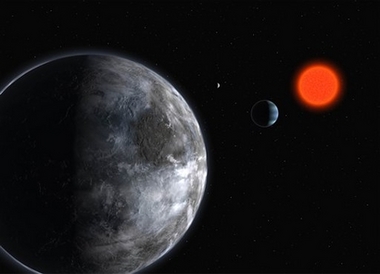Otherworldly Top Ten!
 After reading an article about how the “trickle of planet discoveries” as become a “flood” -referring to the many discoveries of extrasolar planets that are being announced these days, since they first started being discovered in
After reading an article about how the “trickle of planet discoveries” as become a “flood” -referring to the many discoveries of extrasolar planets that are being announced these days, since they first started being discovered in 1995 1988/9 (there are more than 200 known now)- I looked at space.com’s “top ten most intriguing extrasolar planets”.
[Update: First detection of extrasolar planets is probably more accurately to be dated 1988/9. The first confirmed one was in 1995, but the planet Gamma_Cephei_Ab, detected in 1988(9) by two separate teams, took until 2002 to be confirmed. See e.g. here for more. Thanks commenter molliska!]
Have a look at that interesting article about the pace of discovery, and then when you’re done, peruse the top ten here. You’ll find:
- 10: 51 Pegasi b, the first confirmed (see above update) one found, 1995;
- 9: Epsilon Eridani b, the closest known one (only 10.5 light years away);
- 8: the class of planemos, the extrasolar planets which are not orbiting any stars;
- 7: SWEEPS-10, a “zippy” planet, that orbits its star every 10 hours as opposed to our sluggish 365.25 days;
- 6: Upsilon Andromeda b, a planet which is tidally locked to its star so that it presents only one face to it all the time. So one side is always super hot, while the other is very cold;
- 5: The youngest one known (it’s been in existence a bit less than a million years), orbiting the star Coku Tau 4;
- 4: PSR B1620-26c, the oldest one known (12.7 billion years…wow!);
- 3: The “shrinking one”, HD209458b, that orbits so close to its star that it’s


